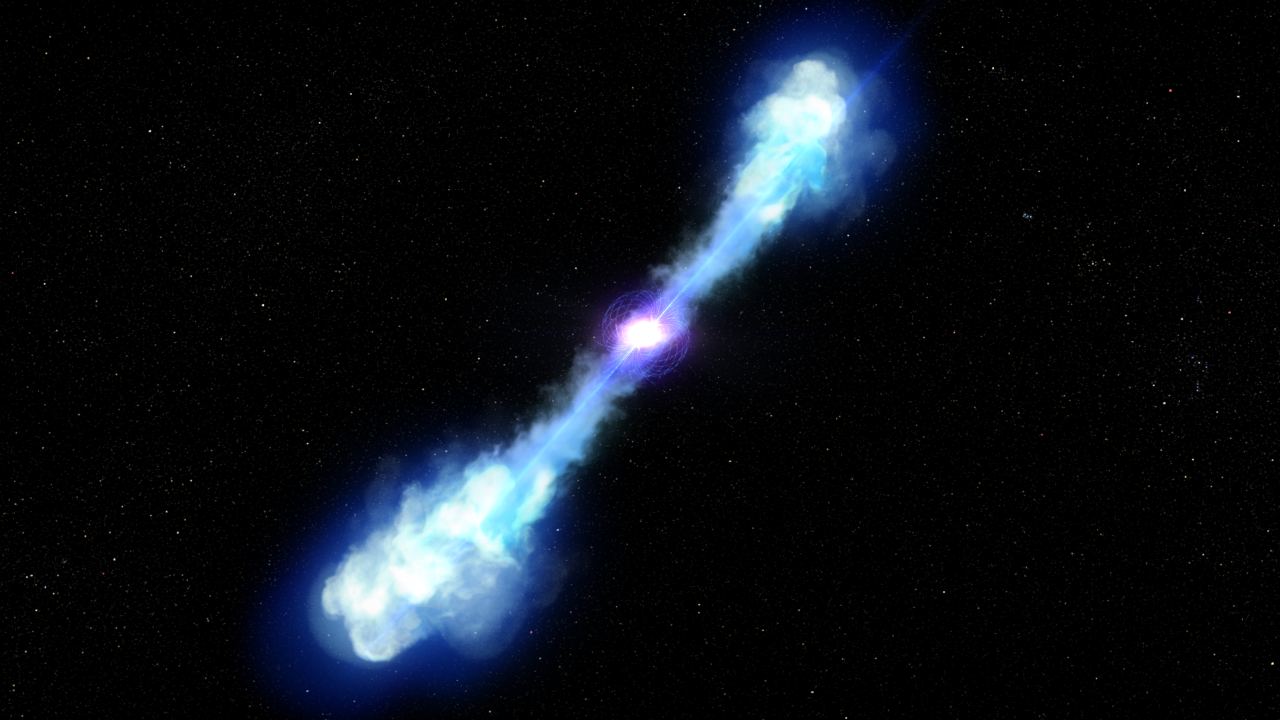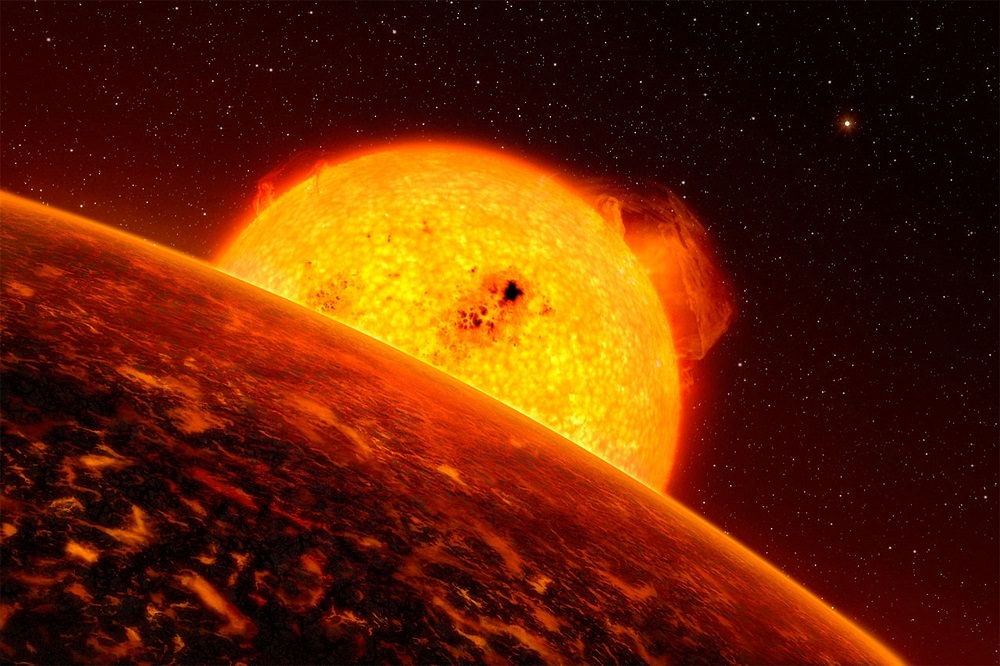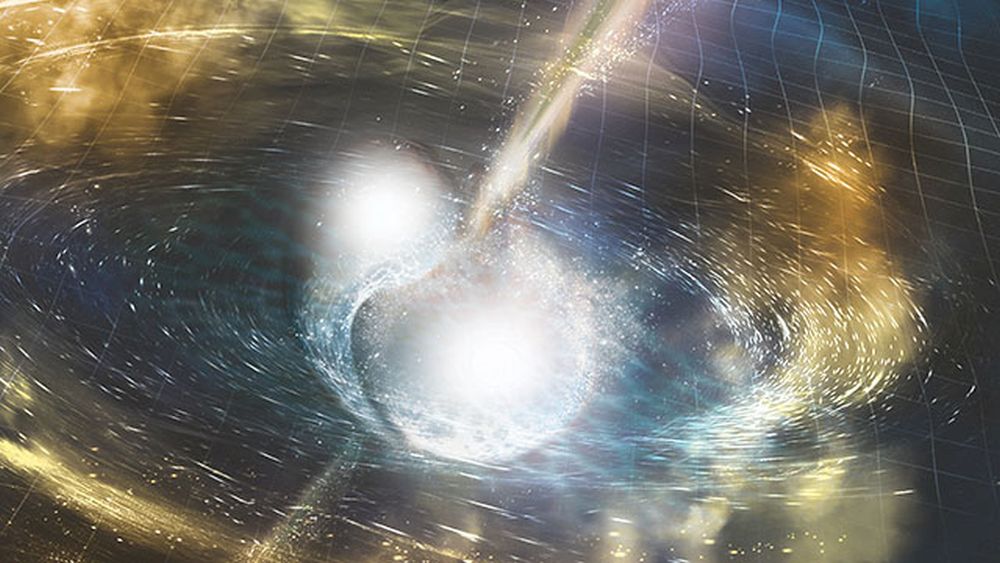Black holes come in three sizes: small, medium, and large. Small black holes are of stellar mass. They form when a large star collapses at the end of its life. Large black holes lurk in the centers of galaxies and are millions or billions of solar masses. Middle-sized black holes are those between 100 to 100,000 solar masses. They are known as Intermediate Mass Black Holes (IMBHs), and they are the kind we least understand.
Continue reading “An Intermediate-Mass Black Hole Discovered Through the Gravitational Lensing of a Gamma-ray Burst”Astronomers think they’ve seen a magnetar form for the first time; the collision of two neutron stars
A magnetar is a neutron star with a magnetic field thousands of times more powerful than those of typical neutron stars. Their fields are so strong that they can generate powerful, short-duration events such as soft gamma repeaters and fast radio bursts. While we have learned quite a bit about magnetars in recent years, we still don’t understand how neutron stars can form such intense magnetic fields. But that could soon change thanks to a new study.
Continue reading “Astronomers think they’ve seen a magnetar form for the first time; the collision of two neutron stars”Beyond “Fermi’s Paradox” X: What is the Firstborn Hypothesis?
Welcome back to our Fermi Paradox series, where we take a look at possible resolutions to Enrico Fermi’s famous question, “Where Is Everybody?” Today, we examine the possibility that the reason for the Great Silence is that we are “early to the party”!
In 1950, Italian-American physicist Enrico Fermi sat down to lunch with some of his colleagues at the Los Alamos National Laboratory, where he had worked five years prior as part of the Manhattan Project. According to various accounts, the conversation turned to aliens and the recent spate of UFOs. Into this, Fermi issued a statement that would go down in the annals of history: “Where is everybody?“
This became the basis of the Fermi Paradox, which refers to the disparity between high probability estimates for the existence of extraterrestrial intelligence (ETI) and the apparent lack of evidence. Since Fermi’s time, there have been several proposed resolutions to his question, which includes the Firstborn Hypothesis that states that humanity could be the first intelligent life to emerge in our galaxy.
Continue reading “Beyond “Fermi’s Paradox” X: What is the Firstborn Hypothesis?”A New Kind of Supernova Explosion has been Discovered: Fast Blue Optical Transients
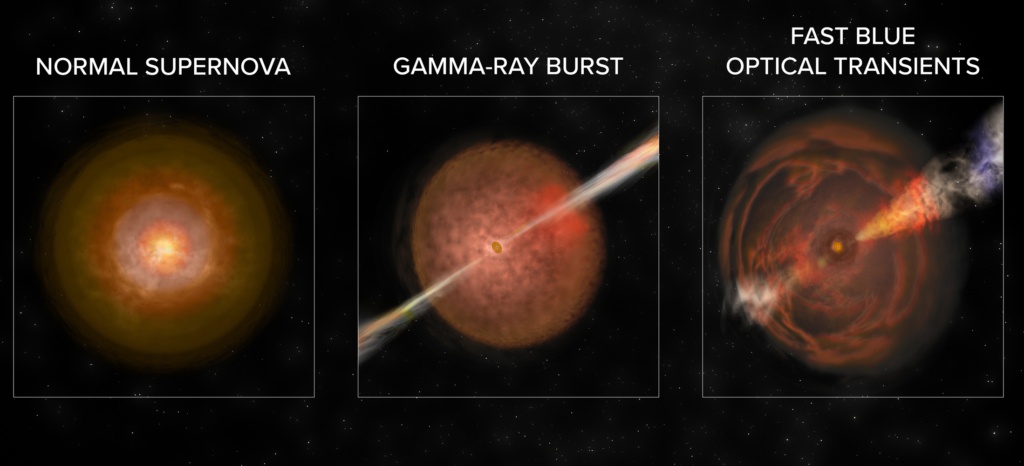
For the child inside all of us space-enthusiasts, there might be nothing better than discovering a new type of explosion. (Except maybe bigger rockets.) And it looks like that’s what’s happened. Three objects discovered separately—one in 2016 and two in 2018—add up to a new type of supernova that astronomers are calling Fast Blue Optical Transients (FBOT).
Continue reading “A New Kind of Supernova Explosion has been Discovered: Fast Blue Optical Transients”NASA Chooses 4 New Astronomy Space Missions for Additional Study

Since 1958, the NASA Explorer Program has conducted low-cost missions that were deemed relevant to the goals of the Science Mission Directorate (SMD), particularly where the study of our Sun and the deeper cosmic mysteries are concerned. Recently, the Explorer Program selected four missions that they considered to be well-suited to these goals, two of which will be selected for launch in the coming years.
Consisting of two astrophysics Small Explorer (SMEX) and two Missions of Opportunity (MO) proposals, these missions are designed to study cosmic explosions and the debris they leave behind, as well as monitor how nearby stellar flares may affect the atmospheres of orbiting planets. After detailed evaluations, two of these missions will be selected next year and will take to space sometime in 2025.
Continue reading “NASA Chooses 4 New Astronomy Space Missions for Additional Study”It Takes Two Stars to Make a Gamma Ray Burst
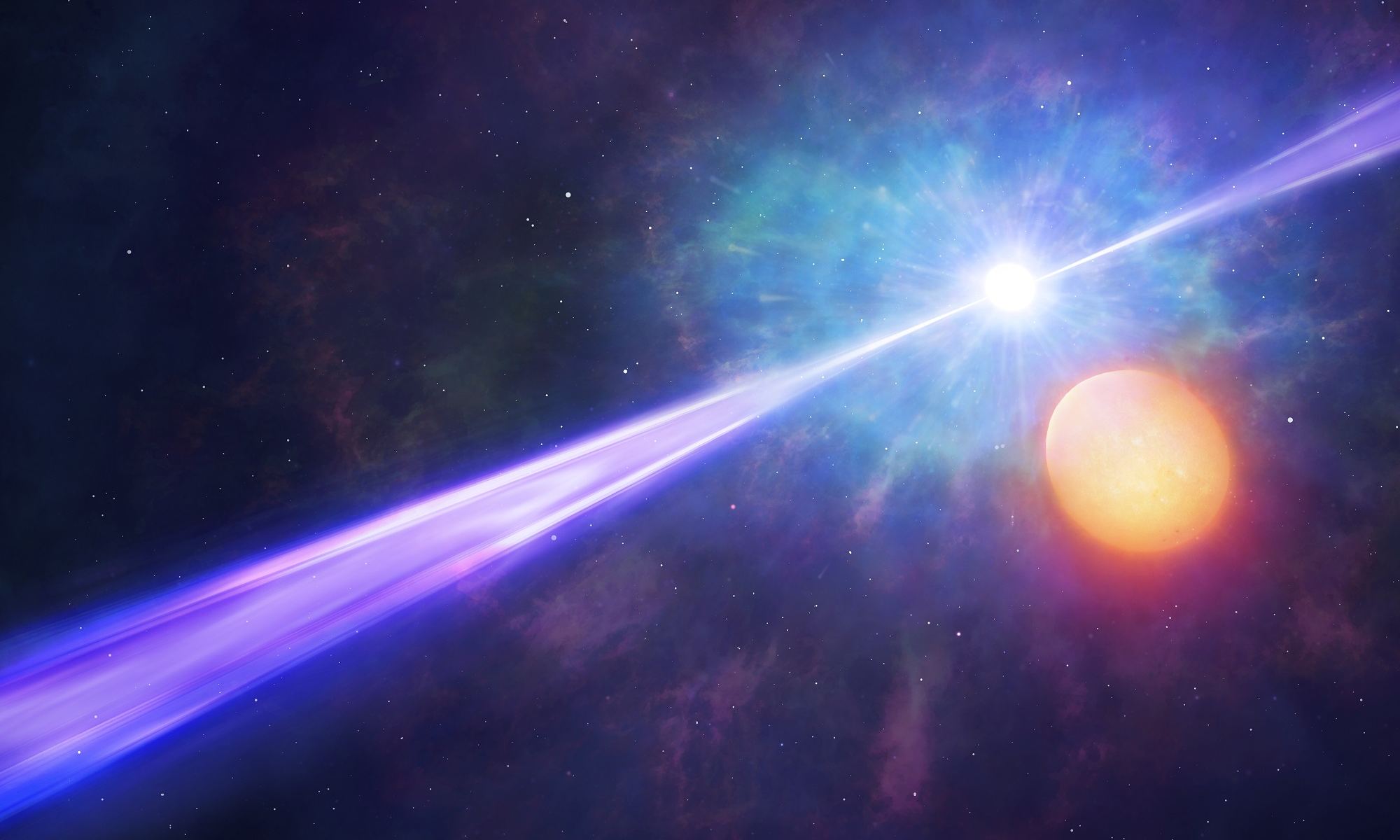
In 1967, NASA scientists noticed something they had never seen before coming from deep space. In what has come to be known as the “Vela Incident“, multiple satellites registered a Gamma-Ray Burst (GRB) that was so bright, it briefly outshined the entire galaxy. Given their awesome power and the short-lived nature, astronomers have been eager to determine how and why these bursts take place.
Decades of observation have led to the conclusion that these explosions occur when a massive star goes supernova, but astronomers were still unsure why it happened in some cases and not others. Thanks to new research by a team from the University of Warwick, it appears that the key to producing GRBs lies with binary star systems – i.e. a star needs a companion in order to produce the brightest explosion in the Universe.
Continue reading “It Takes Two Stars to Make a Gamma Ray Burst”Hubble Has Looked at the 2017 Kilonova Explosion Almost a Dozen Times, Watching it Slowly Fade Away
In 2017, LIGO (Laser-Interferometer Gravitational Wave Observatory) and Virgo detected gravitational waves coming from the merger of two neutron stars. They named that signal GW170817. Two seconds after detecting it, NASA’s Fermi satellite detected a gamma ray burst (GRB) that was named GRB170817A. Within minutes, telescopes and observatories around the world honed in on the event.
The Hubble Space Telescope played a role in this historic detection of two neutron stars merging. Starting in December 2017, Hubble detected the visible light from this merger, and in the next year and a half it turned its powerful mirror on the same location over 10 times. The result?
The deepest image of the afterglow of this event, and one chock-full of scientific detail.
Continue reading “Hubble Has Looked at the 2017 Kilonova Explosion Almost a Dozen Times, Watching it Slowly Fade Away”Massive Triple Star System Creates this Bizarre Swirling Pinwheel of Dust. And it Could be the Site of a Gamma Ray Burst
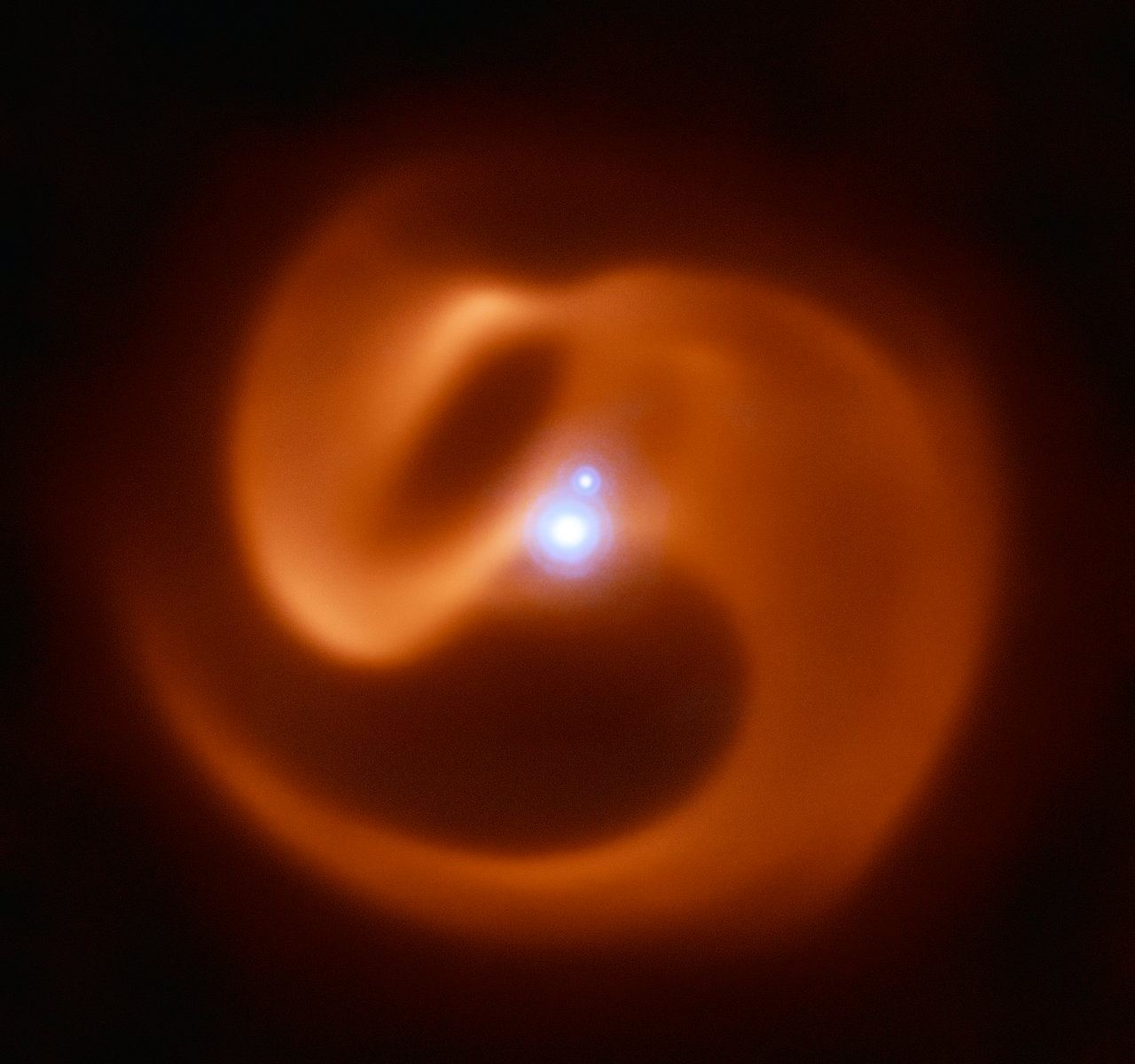
When stars reach the end of their lifespan, many undergo gravitational collapse and explode into a supernova, In some cases, they collapse to become black holes and release a tremendous amount of energy in a short amount of time. These are what is known as gamma-ray bursts (GRBs), and they are one of the most powerful events in the known Universe.
Recently, an international team of astronomers was able to capture an image of a newly-discovered triple star system surrounded by a “pinwheel” of dust. This system, nicknamed “Apep”, is located roughly 8,000 light years from Earth and destined to become a long-duration GRB. In addition, it is the first of its kind to be discovered in our galaxy.
Physicists Have Created an Artificial Gamma Ray Burst in the Lab

On July 2nd, 1967, the U.S. Vela 3 and 4 satellites noticed something rather perplexing. Originally designed to monitor for nuclear weapons tests in space by looking for gamma radiation, these satellites picked up a series of gamma-ray bursts (GRBs) coming from deep space. And while decades have passed since the “Vela Incident“, astronomers are still not 100% certain what causes them.
One of the problems has been that until now, scientists have been unable to study gamma ray bursts in any real capacity. But thanks to a new study by an international team of researchers, GRBs have been recreated in a laboratory for the first time. Because of this, scientists will have new opportunities to investigate GRBs and learn more about their properties, which should go a long away towards determining what causes them.
The study, titled “Experimental Observation of a Current-Driven Instability in a Neutral Electron-Positron Beam“, was recently published in the Physical Review Letters. The study was led by Jonathon Warwick from Queen’s University Belfast and included members from the SLAC National Accelerator Laboratory, The John Adams Institute for Accelerator Science, the Rutherford Appleton Laboratory, and multiple universities.
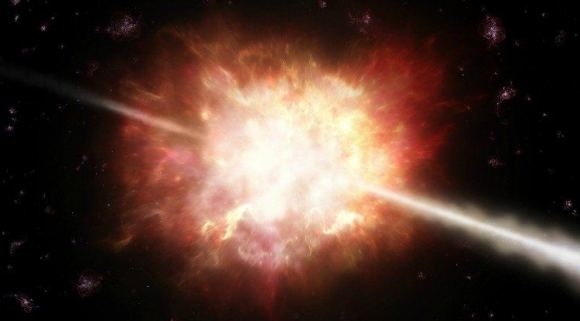
Until now, the study of GRBs have been complicated by two major issues. On the one hand, GRBs are very short lived, lasting for only seconds at a time. Second, all detected events have occurred in distant galaxies, some of which were billions of light-years away. Nevertheless, there are a few theories as to what could account for them, ranging from the formation of black holes and collisions between neutron stars to extra-terrestrial communications.
For this reason, investigating GRBs is especially appealing to scientists since they could reveal some previously-unknown things about black holes. For the sake of their study, the research team approached the question of GRBs as if they were related to the emissions of jets of particles released by black holes. As Dr. a lecturer at Queen’s University Belfast, explained in a recent op-ed piece with The Conversation:
“The beams released by the black holes would be mostly composed of electrons and their “antimatter” companions, the positrons… These beams must have strong, self-generated magnetic fields. The rotation of these particles around the fields give off powerful bursts of gamma ray radiation. Or, at least, this is what our theories predict. But we don’t actually know how the fields would be generated.”
With the assistance of their collaborators in the US, France, the UK and Sweden, the team from Queen’s University Belfast relied on the Gemini laser, located at the Rutherford Appleton Laboratory in the UK. With this instrument, which is one of the most powerful lasers in the world, the international collaboration sought to create the first small scale replica of GRBs.
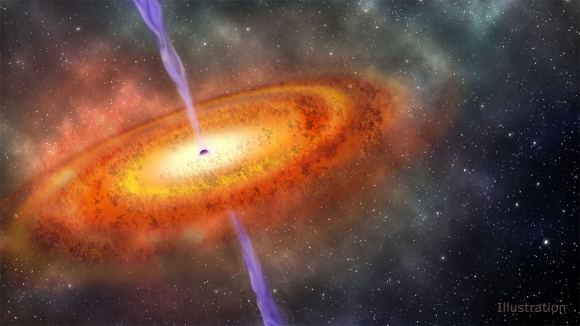
By shooting this laser onto a complex target, the team was able to create miniature versions of these ultra-fast astrophysical jets, which they recorded to see how they behaved. As Dr. Sarri indicated:
“In our experiment, we were able to observe, for the first time, some of the key phenomena that play a major role in the generation of gamma ray bursts, such as the self-generation of magnetic fields that lasted for a long time. These were able to confirm some major theoretical predictions of the strength and distribution of these fields. In short, our experiment independently confirms that the models currently used to understand gamma ray bursts are on the right track.”
This experiment was not only important for the study of GRBs, it could also advance our understanding about how different states of matter behave. Basically, almost all phenomena in nature come down to the dynamics of electrons, as they are much lighter than atomic nuclei and quicker to respond to external stimuli (such as light, magnetic fields, other particles, etc).
“But in an electron-positron beam, both particles have exactly the same mass, meaning that this disparity in reaction times is completely obliterated,” said Dr. Sarri. “This brings to a quantity of fascinating consequences. For example, sound would not exist in an electron-positron world.”

In addition, there is the aforementioned argument that GRBs could in fact be evidence of Extra-Terrestrial Intelligence (ETI). In the Search for Extra-Terrestrial Intelligence (SETI), scientists look for electromagnetic signals that do not appear to have natural explanations. By knowing more about different types of electromagnetic bursts, scientists could be better able to isolate those for which there are no known causes. As Dr. Sarri put it:
“Of course, if you put your detector to look for emissions from space, you do get an awful lot of different signals. If you really want to isolate intelligent transmissions, you first need to make sure all the natural emissions are perfectly known so that they can excluded. Our study helps towards understanding black hole and pulsar emissions, so that, whenever we detect anything similar, we know that it is not coming from an alien civilization.”
Much like research into gravitational waves, this study serves as an example of how phenomena that were once beyond our reach is now open to study. And much like gravitational waves, research into GRBs is likely to yield some impressive returns in the coming years!
Further Reading: The Conversation, Physical Review Letters
How Do Stars Go Rogue?
Rogue stars are moving so quickly they’re leaving the Milky Way, and never coming back. How in the Universe could this happen?
Stars are built with the lightest elements in the Universe, hydrogen and helium, but they contain an incomprehensible amount of mass. Our Sun is made of 2 x 10^30 kgs of stuff. That’s a 2 followed by 30 zeros. That’s 330,000 times more stuff than the Earth.
You would think it’d be a bit of challenge to throw around something that massive, but there are events in the Universe which are so catastrophic, they can kick a star so hard in the pills that it hits galactic escape velocity.
Rogue, or hypervelocity stars are moving so quickly they’re leaving the Milky Way, and never coming back. They’ve got a one-way ticket to galactic voidsville. The velocity needed depends on the location, you’d need to be traveling close to 500 kilometers per second. That’s more than twice the speed the Solar System is going as it orbits the centre of the Milky Way.
There are a few ways you can generate enough kick to fire a star right out of the park. They tend to be some of the most extreme events and locations in the Universe. Like Supernovae, and their big brothers, gamma ray bursts.
Supernovae occur when a massive star runs out of hydrogen, keeps fusing up the periodic table of elements until it reaches iron. Because iron doesn’t allow it to generate any energy, the star’s gravity collapses it. In a fraction of a second, the star detonates, and anything nearby is incinerated. But what if you happen to be in a binary orbit with a star that suddenly vaporizes in a supernova explosion?
That companion star is flung outward with tremendous velocity, like it was fired from a sling, clocking up to 1,200 km/s. That’s enough velocity to escape the pull of the Milky Way. Huzzah! Onward, to adventure! Ahh, crap… please do not be pointed at the Earth?
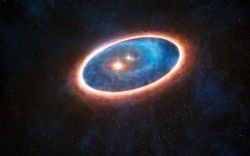
Another way to blast a star out of the Milky Way is by flying it too close to Kevin, the supermassive black hole at the heart of the galaxy.
And for the bonus round, astronomers recently discovered stars rocketing away from the galactic core as fast as 900 km/s. It’s believed that these travelers were actually part of a binary system. Their partner was consumed by the Milky Way’s supermassive black hole, and the other is whipped out of the galaxy in a gravitational jai halai scoop.
Interestingly, the most common way to get flung out of your galaxy occurs in a galactic collision. Check out this animation of two galaxies banging together. See the spray of stars flung out in long tidal tails? Billions of stars will get ejected when the Milky Way hammers noodle first into Andromeda.
A recent study suggests half the stars in the Universe are rogue stars, with no galaxies of their own. Either kicked out of their host galaxy, or possibly formed from a cloud of hydrogen gas, flying out in the void. They are also particularly dangerous to Carol Danvers.
Considering the enormous mass of a star, it’s pretty amazing that there are events so catastrophic they can kick entire stars right out of our own galaxy.
What do you think life would be like orbiting a hypervelocity star? Tell us your thoughts in the comments below.


